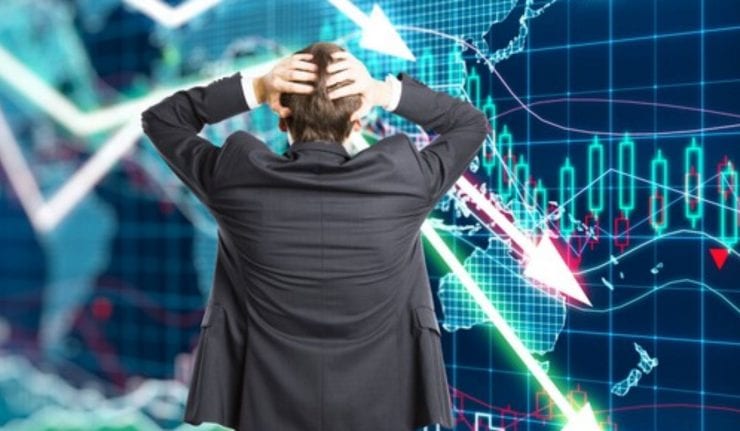Wall Street is nervous.
Earnings growth is deteriorating and stocks that were once household names are cratering. The yield curve has signaled that there will be a recession sometime in the next five years.
Add a government shutdown that could trigger another U.S. credit downgrade, tension overseas and the highest interest rates in a decade, and I understand if you can’t shake the sense that storms are brewing. Even if the world isn’t ending, it can feel like the good times are over and there’s nothing but diminishing returns ahead.
Let’s get that settled right away. If we somehow avoid the recession threats that will be stacked against us for the next five years, I’ll be shocked.
An economic downturn at this point is practically inevitable. The only questions are how bad it’s going to get and how long we have to prepare.
Testing the Statistical Limit
The current expansion will tie with the second-longest boom on record next month. If we go another year without a recession, we’ll be in uncharted territory.
That prospect doesn’t bother me. Limits were made to be broken. And as the economy continues to become better integrated, decision makers can compensate faster and with greater precision with systemic threats as they emerge.
A century ago, bank failures would have crippled the economy for years on end. Now even the worst downturns play out in a matter of months.
Even so, perfection remains elusive. Since we are four years past the point where a typical postwar expansion should end, the bull is living on borrowed time. Every month we evade a recession only tests the standard deviation.
We’re effectively pushing our luck. But that’s true every minute we’re alive and participating in the market. Enjoy and remain open to the upside while we still have it.
And when the downturn begins, be ready to survive the bear side of the cycle. Here’s how I’ve done it.
Seven Stages of a Stock Market Crash Strategy
1. When you’re waiting for the crash, lock in the best dividend yields you can to guarantee your uninterrupted current income. These should be companies with strong balance sheets and economically resilient businesses.
Think Big Pharma, utilities and packaged food. My favorite right now is J.M. Smucker (NYSE:SJM) but you’ll be able to find the latest opportunities on my Value Authority list.
You don’t need long-term conviction here. All you need from these stocks is the confidence that they’ll pay enough to meet your cash flow needs over the next year without selling a single share.
Depending on your situation, that might be a few stocks yielding 3-4 percent, or it might be your entire portfolio. Either way, the timeframe here isn’t arbitrary. Four out of five modern recessions are statistically over within a year.
2. After you’ve locked in your current income for a year, it will serve as your first line of defense. Now take a deep breath and allocate the rest of your capital to deep value stocks that don’t return a lot of cash to shareholders but trade at a significant discount.
Because you don’t need these stocks to pay off in the next year, you can afford a little patience. If the economy needs time to heal, you can wait.
Consider companies like Goldman Sachs (NYSE:GS), which can pay as little as 1 percent in dividends at its peak but are currently 35 percent below their tops.
These businesses aren’t going away. It might take time, but they’ll make shareholders happy sooner or later.
3. At this point, you maybe are already facing that market crash, just like I did back in 2000 and again in 2008. As long as your immediate liquidity needs are met, you can remain lucid.
A sideways and volatile market is the time to exploit short-term swings in sentiment to generate additional income.
At this phase, you’re not looking to hold any stock for the long haul. There are no Warren Buffetts in a foxhole. All you want is a stock that’s moving fast enough to generate a little friction.
The quintessential stock here is Apple (NASDAQ:AAPL) and options are the way to play even the small swings in either direction. We just booked a 20 percent profit here in my High Octane Trader advisory service and I expect we undoubtedly will do it again.
4. After a year, review your holdings. Can you get better yields on equally resilient companies? If so, trade up to a higher income.
I love Big Pharma at this stage. In the 2008 crash, stocks like Eli Lilly (NYSE:LLY) were so depressed that we had a chance to lock in yields close to 7 percent.
That’s a lifetime annuity in the making, and you’ll never have to sell a single share to get it.
5. Very few downturns drag on for longer than 12 months, but even if we’re staring at a 2008-level recession, the sun should come out in the second year.
That’s the time to start converting your income stocks to classic blue-chip holdings that you missed earlier in the cycle.
I rarely tell my subscribers to buy into McDonald’s (NYSE:MCD) or Coca-Cola (NYSE:KO), for example, but late in a downturn is when they provide compelling value.
Back in early 2009, MCD was available for 13X earnings. We won’t get a chance like that until the stock drops at least 50 percent.
6. After the blue chips bottom out, it’s time to anticipate the next growth cycle ahead. This might be months before the market as a whole recovers, but you want to be ahead of the curve.
In the past I’ve started from the top of the food chain and worked down. Amazon (NASDAQ:AMZN) was my friend in 2001 and again in 2009. Square (NASDAQ:SQ) may play that role next time.
7. Repeat throughout the cycle. Very few careers only last one bull market. The goal is to build up a profit when stocks are soaring and then translate it into income.
I’m a big fan of the power of Big Biotech for the next cycle but a lot of my favorite stocks there will get bought out.
Regeneron (NASDAQ:REGN) may be my best wealth creation idea. We’ve seen it in my top-tier service and will probably see it again.
But in the meantime, Inner Circle is the place to be. That’s where all my ideas go, tailored for every tick on the economic clock.




